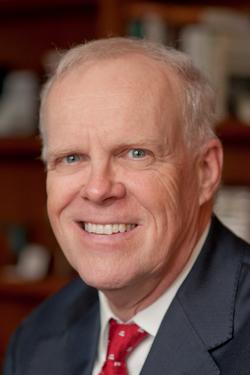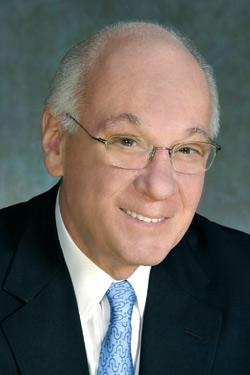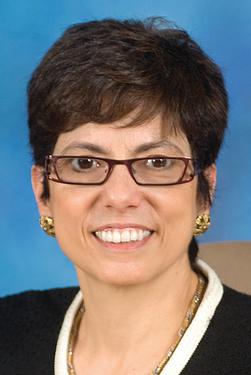


Top to bottom: Stanford University President John L. Hennessy, CUNY Chancellor Matthew Goldstein and City College of New York President Lisa S. Coico today announced a new collaboration, Stanford@CCNY, in response to Mayor Bloomberg's call to create a wor
Partnership between Stanford and the Nation’s Leading Public University
Creates Stanford@CCNY
In response to Mayor Michael Bloomberg’s call to strengthen New York City’s economy by creating a world-class applied science and engineering school here, Stanford University President John L. Hennessy, The City University of New York Chancellor Matthew Goldstein and City College President Lisa S. Coico today announced the creation of the Stanford-CUNY Collaboration at City College, or Stanford@CCNY.
Joining East and West Coast resources in an innovative new arrangement, Stanford@CCNY has the potential to offer the students and faculties of both universities transformative opportunities to partner at the undergraduate, graduate and post-doctorate level and would provide start-up space for Stanford's proposed applied science campus.
Stanford@CCNY will immediately begin to create an East Coast demonstration site on the City College campus for Stanford’s undergraduate curriculum in entrepreneurship, technology management and related areas. The program in innovation learning is funded by a grant from the National Science Foundation to the Stanford Technology Ventures Program, the entrepreneurship center of the Stanford School of Engineering.
"City College and City University have been educating the students of New York for more than 160 years and share our commitment to innovation and technology commercialization," President Hennessy said. “CCNY also has an excellent track record for bringing underrepresented minorities into engineering, which is a clear national priority. We believe there is tremendous potential through our partnership with CUNY to bring Stanford's curriculum to some of the best and brightest students in New York and to help them go on to make significant economic contributions to New York City and New York State."
“CUNY welcomes the opportunity to partner with Stanford University, with City College as our lead institution. Our collective strengths will help pave the way towards the establishment of world-class science and engineering education opportunities,” said Chancellor Goldstein. “The two beneficiaries will be our students and the people of New York City.”
“This collaboration offers our students the opportunity to learn side by side with peers enrolled at one of the world’s finest private universities,” said President Coico. “Stanford@CCNY will create partnerships between our research-active faculty and their colleagues at Stanford, who helped create and sustain Silicon Valley, and these partnerships will incubate innovation and entrepreneurship in the technology sector right here in New York.”
Should Stanford's proposal to create an applied science campus in New York City be accepted, the Stanford@CCNY collaboration would expand to include joint CCNY-Stanford BA/MA and BS/MS programs designed collaboratively by faculty members from both schools. Highly qualified City College students would be admitted to a co-term program enabling them to pursue a BS degree from City College in parallel with an MS degree from Stanford.
Also under the collaboration, Stanford would launch its New York academic programs in teaching and research space at the City College campus until late 2016, when Stanford's Applied Science campus on Roosevelt Island would be expected to be completed and ready for occupancy. Stanford would then turn over the upgraded space and equipment at City College to City University for its permanent use.
Stanford also will host CCNY students each summer as part of its Research Experience for Undergraduates Program, allowing them to work alongside Stanford students in faculty research labs on its California campus, or as part of its Summer Institute for General Management, a four-week program focused on business fundamentals.
As part of Stanford@CCNY, faculty and students from both universities will create mechanisms to collaborate on the inspiration, inception and incubation of new enterprises that will contribute to growing the New York economy. Stanford would renovate and temporarily occupy up to 20,000-square-feet of instructional space on the City College campus, as well as space for up to 20 Stanford faculty members. Stanford and CUNY students and faculty would live and work together, with the possibility that students from both universities could have access to courses offered by both institutions.
Stanford University is preparing its response to Mayor Bloomberg's call for proposals for an applied science campus in New York City with the potential to generate economic growth in the technology sector. Stanford is proposing to build a graduate campus on Roosevelt Island that would focus on engineering, information technology and entrepreneurship, growing in phases to eventually accommodate 100 faculty members and 2,000 master’s and Ph.D. students. Proposals are due to the New York City Economic Development Corporation on Oct. 28. The city has announced that it expects to make a decision by the end of the year.
Media Contacts:
Lisa Lapin, Stanford University, 650-725-8396,
lapin@stanford.edu
Jay Hershenson, The City University of New York, 212-794-5317,
jay.hershenson@mail.cuny.edu
Mary Lou Edmondson, City College of New York, 212-650-7808,
edmondson@ccny.cuny.edu
Ellis Simon, City College of New York, 212-650-6460,
esimon@ccny.cuny.edu
MEDIA CONTACT
Mary Lou Edmondson
p: 212.650.7808
e:
edmondson@ccny.cuny.edu